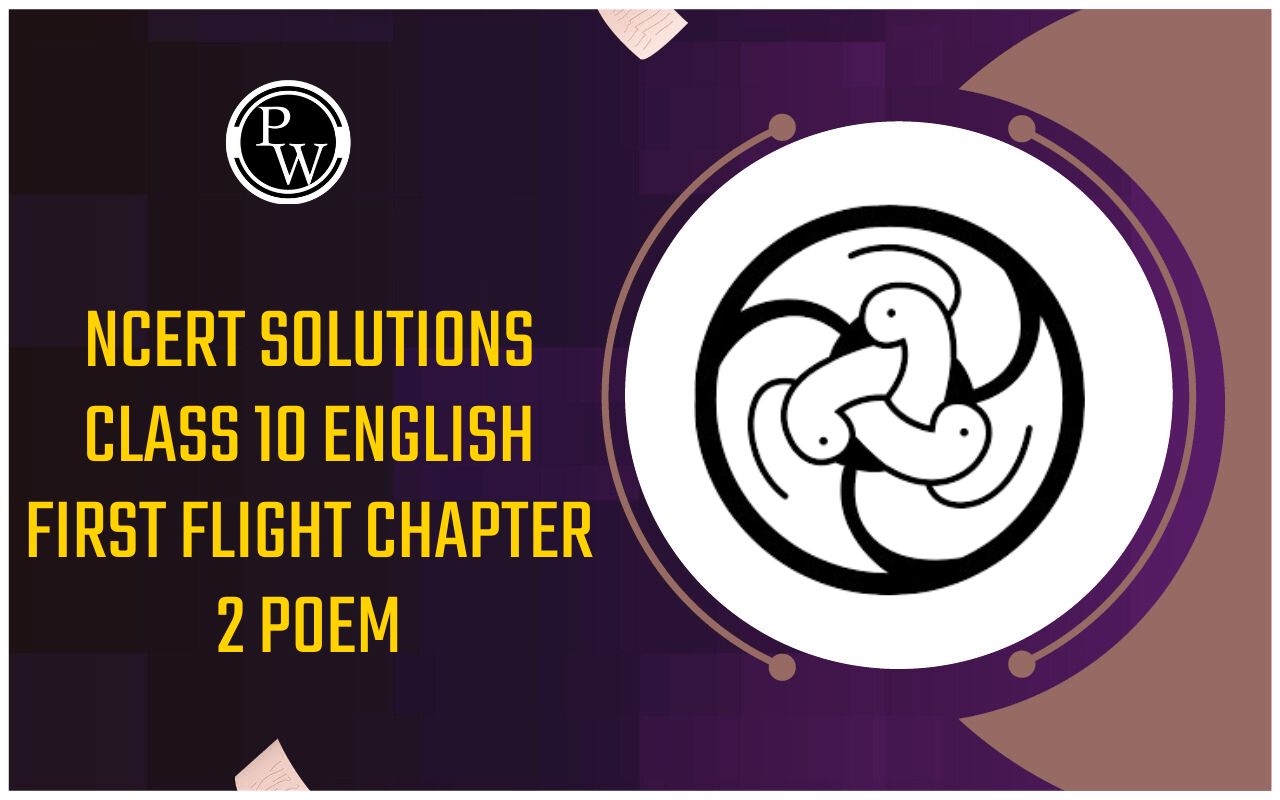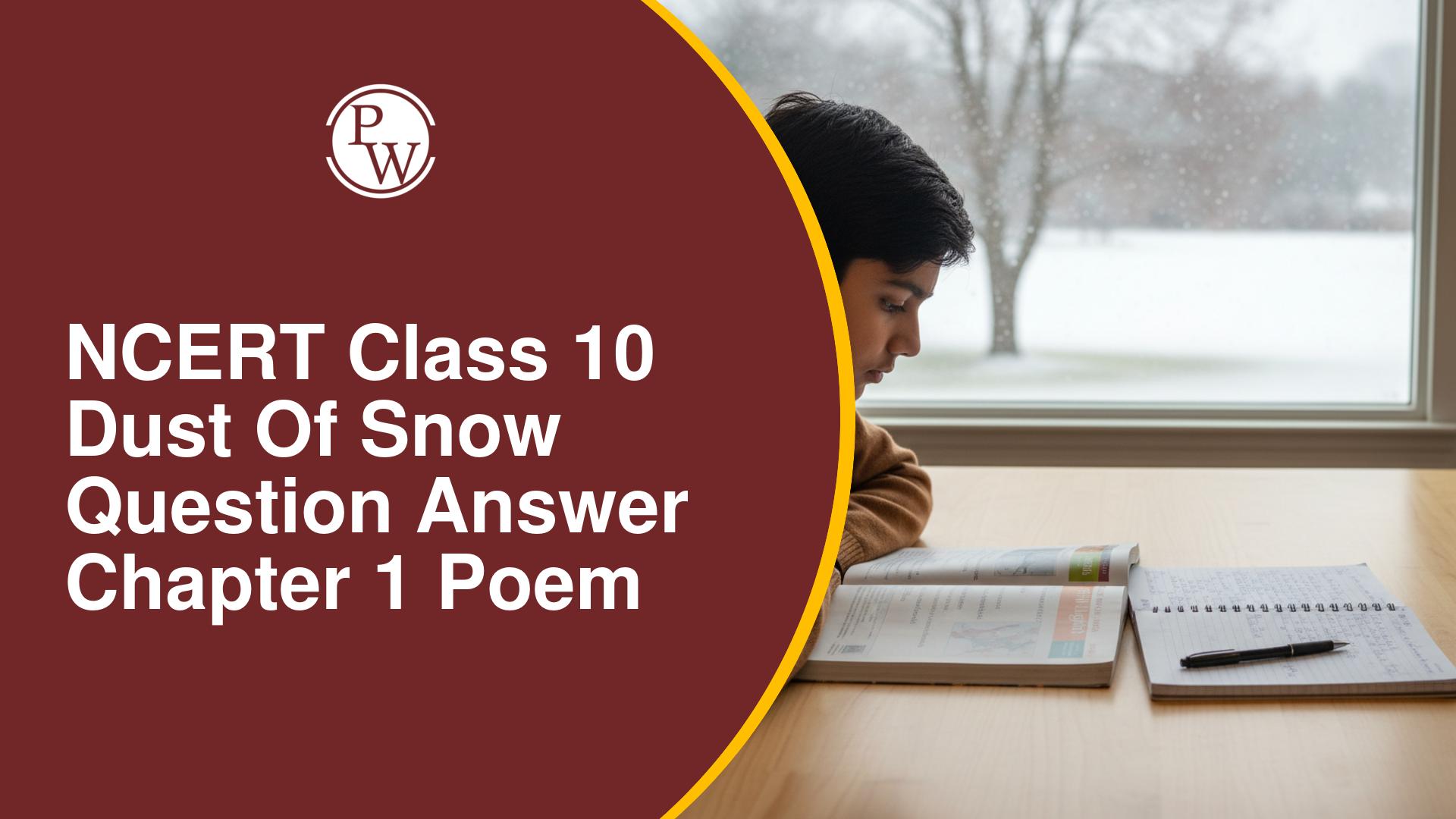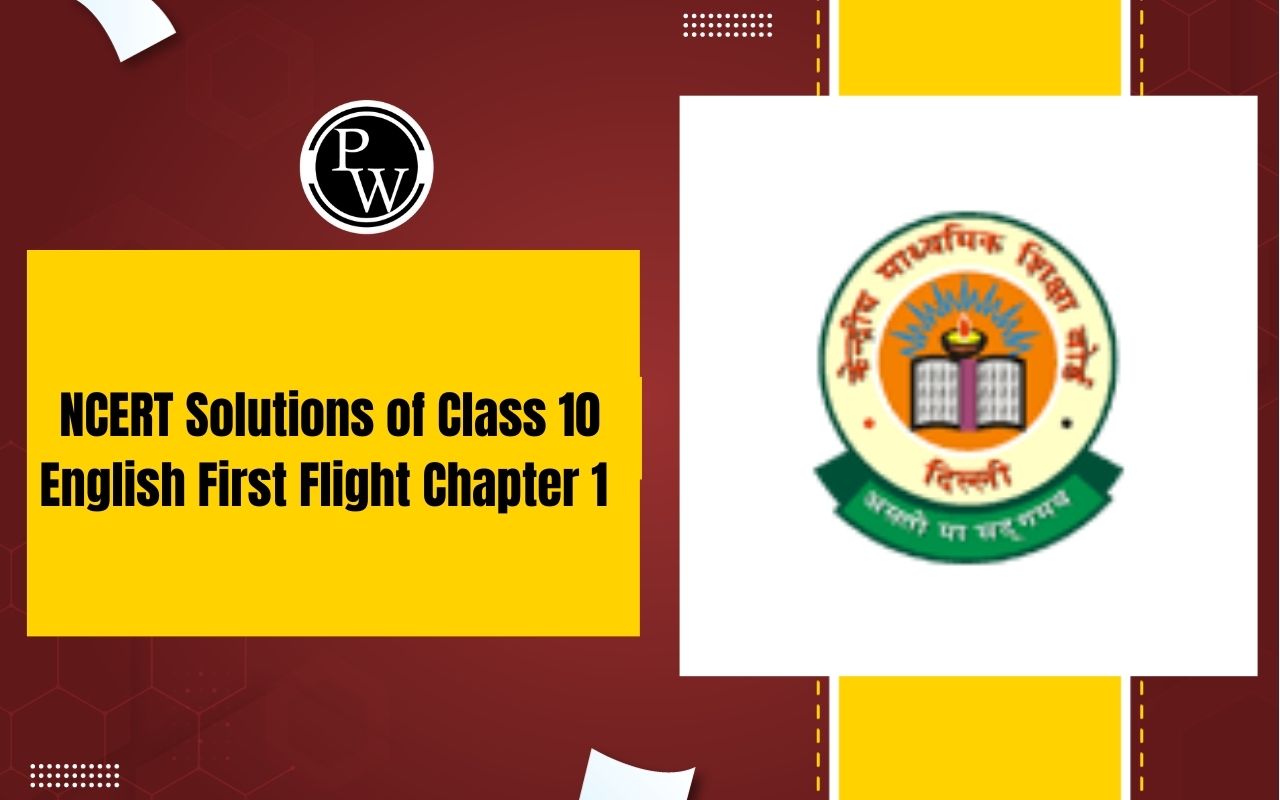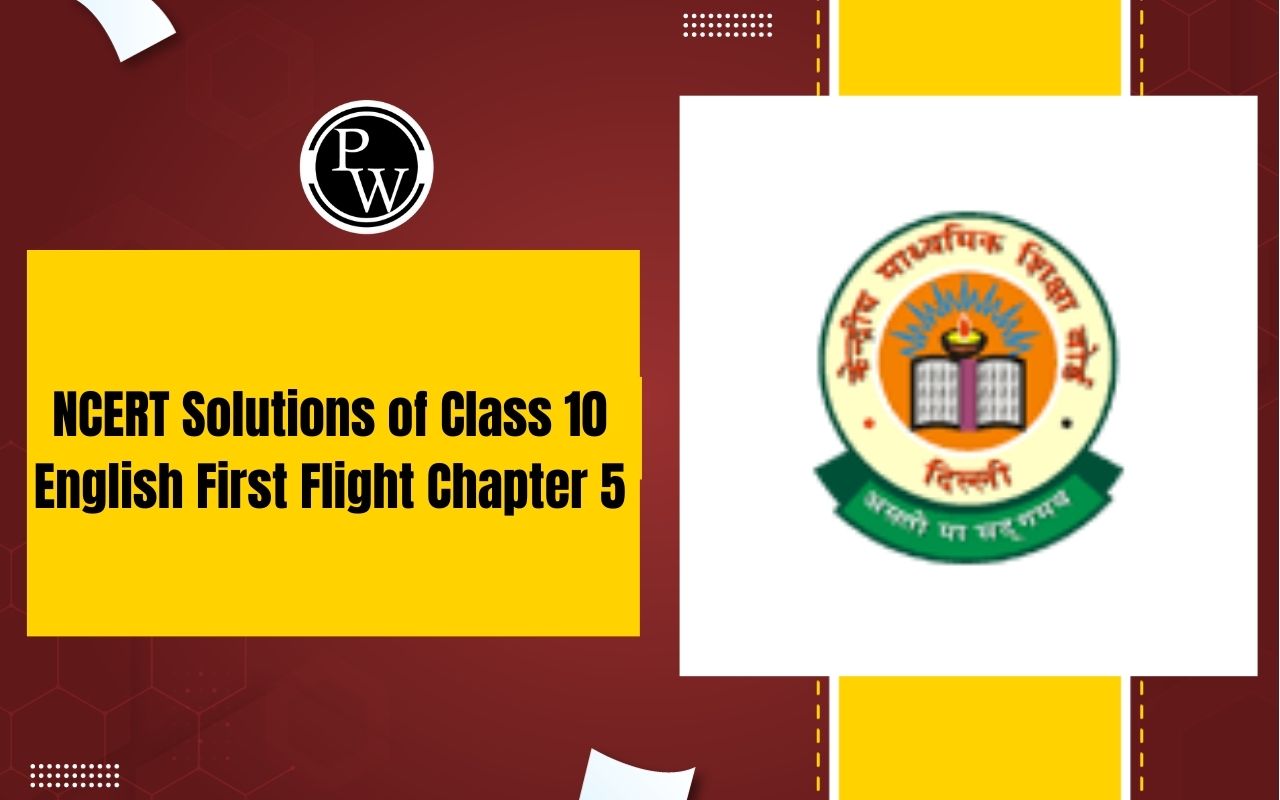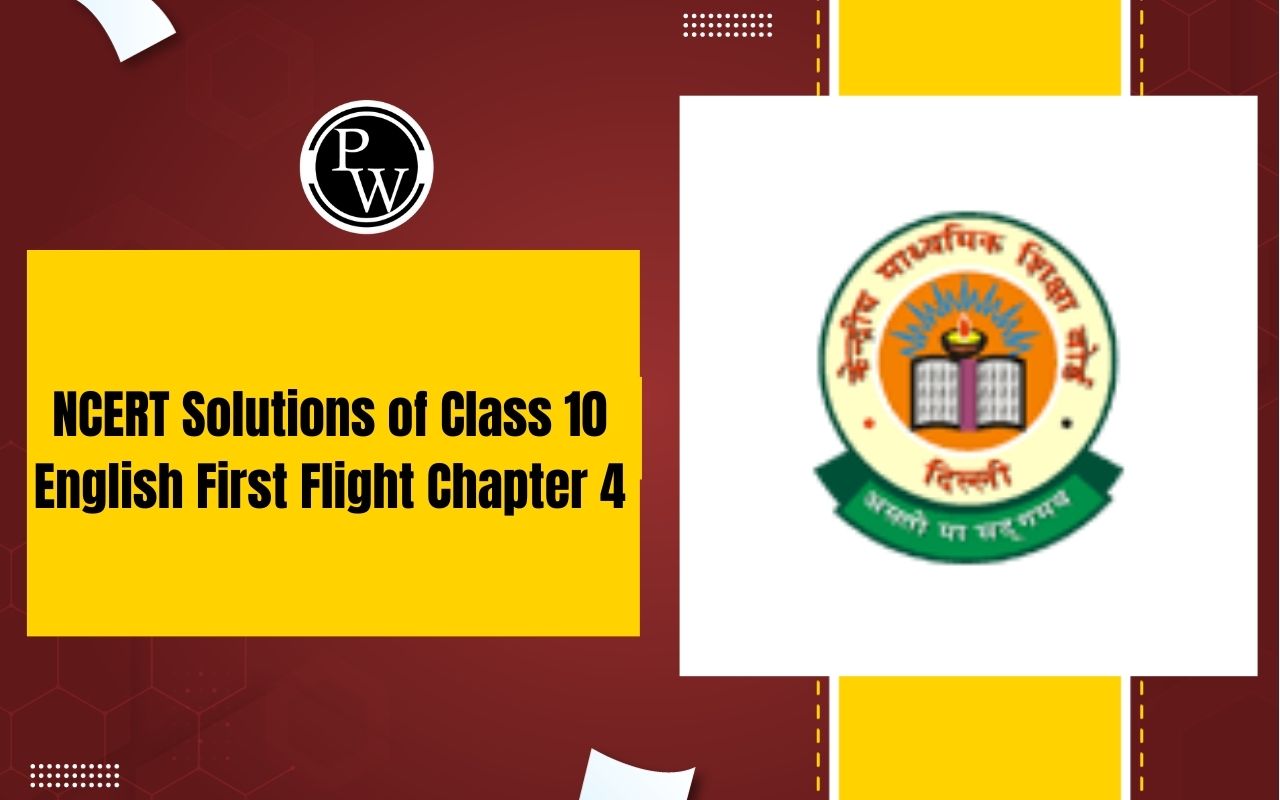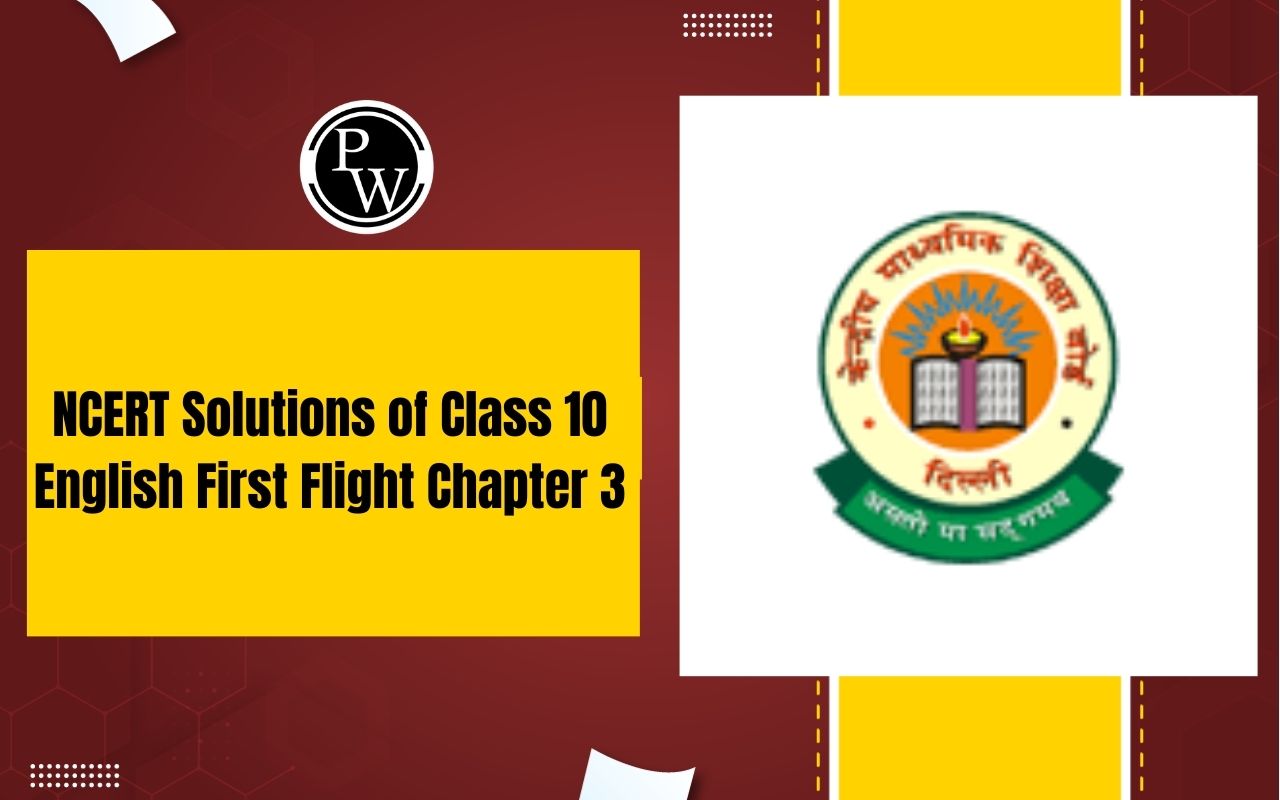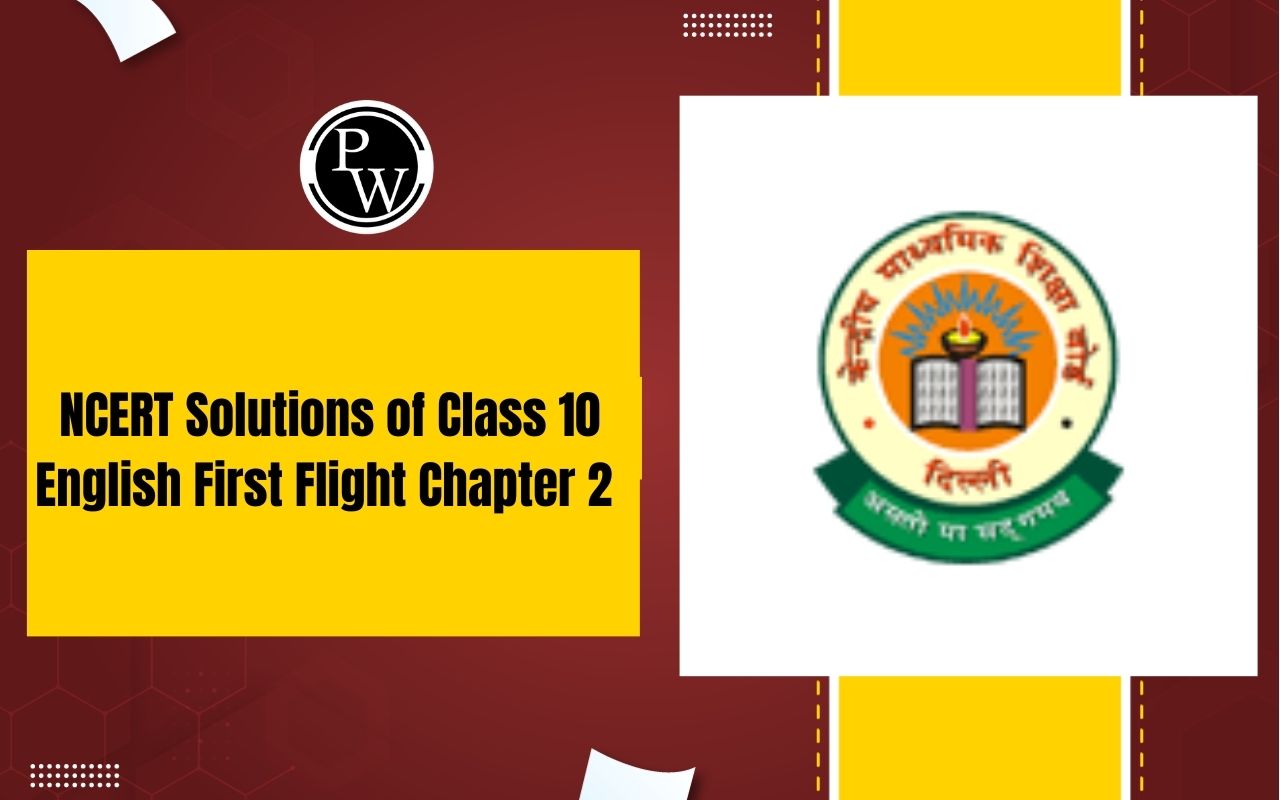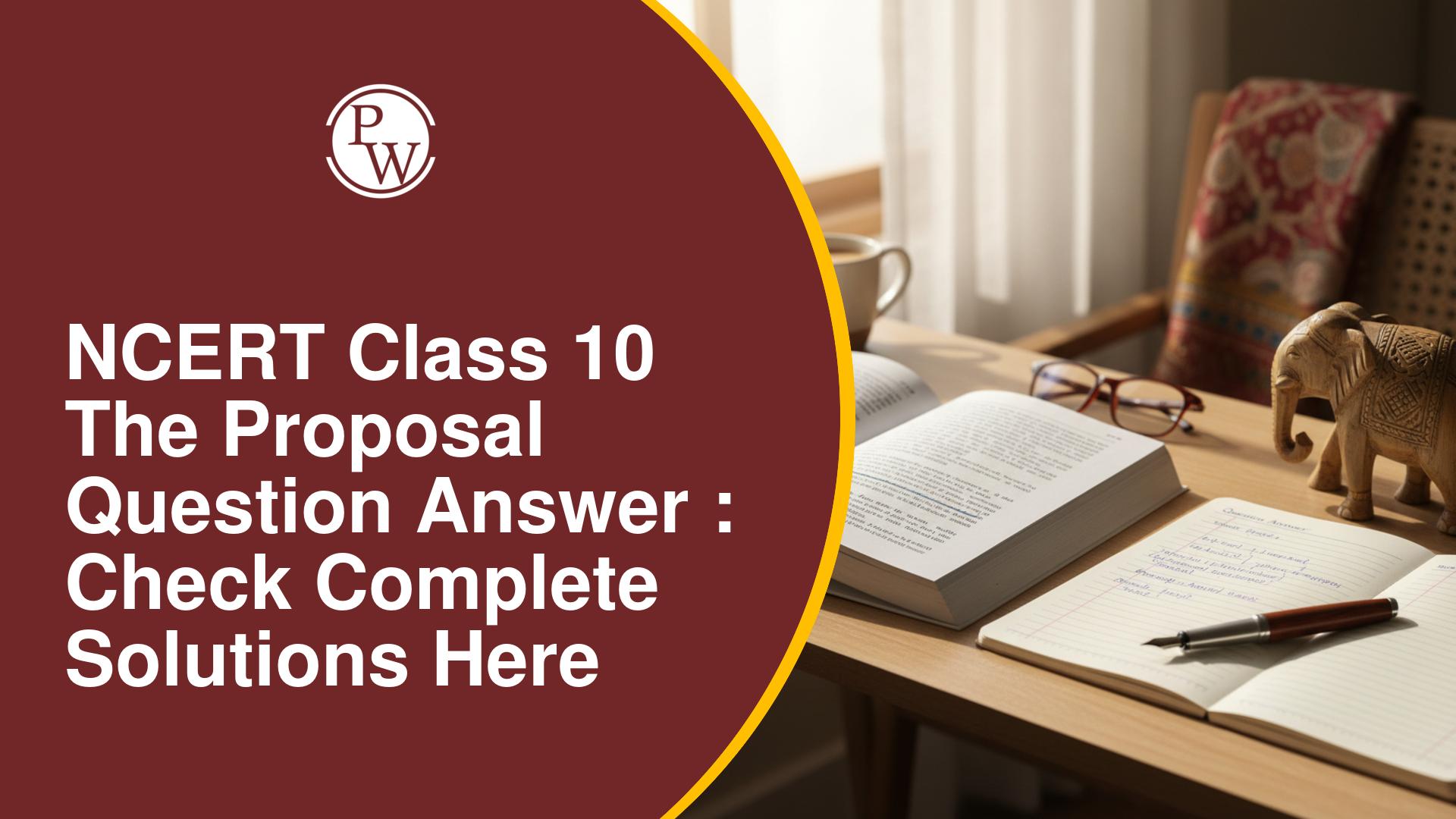
Important Questions for Class 10 Maths Chapter 4: If you're a Class 10 student preparing for the CBSE board exam in 2023-2024, we've got you covered with essential solutions for Chapter 4: Quadratic Equations in Maths. These questions align with the NCERT book and follow the latest exam pattern. Experts have carefully created them after thorough research, aiming to help you score well.
CBSE Class 10 Maths Additional Practice Paper Questions 2023-24
These questions focus on quadratic equations, teaching you how to solve them and find roots using factorisation methods. Practicing these 15 questions, along with their detailed solutions, not only aids in revision but also boosts your preparation for the upcoming exam. Make sure to go through these questions to enhance your understanding of quadratic equations. Additionally, practicing extra important questions will further improve your problem-solving skills in this topic.Important Questions for Class 10 Maths Chapter 4 Overview
This article focuses on Chapter 4, Quadratic Equations, for CBSE Class 10. For students preparing for the CBSE Class 10 board examinations, this serves as a comprehensive checklist of important questions, covering a range of difficulties that may appear in this chapter. Chapter 4, Quadratic Equations, is part of the second unit, Algebra, with a total weightage of 20 marks. The key topics include the standard form of a quadratic equation (ax^2 + bx + c = 0, where a ≠ 0), solutions of quadratic equations (only real roots) through factorization and by using the quadratic formula, and understanding the relationship between discriminant and the nature of roots. This chapter's mastery is crucial, considering its significant weightage in the overall syllabus. To explore the detailed CBSE Class 10 Maths Syllabus for 2022-2023, click on the provided link below.Important Questions with Solutions for Class 10 Maths Chapter 4 Quadratic Equations
Q.1: Find the roots of quadratic equations by factorisation:
(i) √2 x2 + 7x + 5√2=0 (ii) 100x2 – 20x + 1 = 0Solution:
(i) √2 x2 + 7x + 5√2=0
Considering the L.H.S. first, ⇒ √2 x2 + 5x + 2x + 5√2 ⇒ x (√2x + 5) + √2(√2x + 5)= (√2x + 5)(x + √2) The roots of this equation, √2 x2 + 7x + 5√2=0 are the values of x for which (√2x + 5)(x + √2) = 0 Therefore, √2x + 5 = 0 or x + √2 = 0 ⇒ x = -5/√2 or x = -√2(ii) Given, 100x2 – 20x + 1=0
Considering the L.H.S. first, ⇒ 100x2 – 10x – 10x + 1 ⇒ 10x(10x – 1) -1(10x – 1) ⇒ (10x – 1)2 The roots of this equation, 100x2 – 20x + 1=0, are the values of x for which (10x – 1)2= 0 Therefore, (10x – 1) = 0 or (10x – 1) = 0 ⇒ x =1/10 or x =1/10Q.2: By the method of completion of squares show that the equation 4x2+3x+5=0
has no real roots.
Solution:
4x2+3x+5=0 ⇒x2+34x+54=0 ⇒x2+34x+(38)2=−54+964 ⇒(x+38)2=−7164 ⇒x+38=−7164−−−−√ Which is not a real number. Hence the equation has no real roots.Q.3: Find the roots of the following quadratic equations, if they exist, by the method of completing the square:
(i) 2x 2 – 7x +3 = 0
(ii) 2x 2 + x – 4 = 0
Solution:
(i) 2x 2 – 7x + 3 = 0
⇒ 2x 2 – 7x = – 3 Dividing by 2 on both sides, we get ⇒x 2 –7x/2 = -3/2 ⇒x 2 – 2 × x × 7/4 = -3/2 On adding (7/4) 2 to both sides of above equation, we get ⇒ (x) 2 – 2 × x × 7/4 + (7/4) 2 = (7/4) 2 – (3/2) ⇒ (x – 7/4) 2 = (49/16) -(3/2) ⇒ (x – 7/4) 2 = 25/16 ⇒ (x – 7/4) = ± 5/4 ⇒ x = 7/4 ±5/4 ⇒ x = 7/4 +5/4 or x = 7/4-5/4 ⇒ x =12/4 or x =2/4 ⇒ x = 3 or 1/2(ii) 2x 2 + x – 4 = 0
⇒ 2x 2 + x = 4 Dividing both sides of the above equation by 2, we get ⇒ x 2 + x/2 = 2 ⇒ (x) 2 + 2 × x × 1/4 = 2 Now on adding (1/4) 2 to both sides of the equation, we get, ⇒ (x) 2 + 2 × x × 1/4 + (1/4) 2 = 2 + (1/4) 2 ⇒ (x + 1/4) 2 = 33/16 ⇒ x + 1/4 = ± √33/4 ⇒ x = ± √33/4 – 1/4 ⇒ x = ± √33 – 1/4 Therefore, either x = √33-1/4 or x = -√33-1/4.Q.4: The sum of areas of two squares is 468m2. If the difference of their perimeters is 24cm, find the sides of the two squares.
Solution:
Let, the side of the larger square be x. Let, the side of the smaller square be y. x2+y2=468 Cond. II 4x-4y = 24 ⇒xy=6 ⇒x=6+y ⇒x2+y2=468 ⇒(6+y)2+y2= 468 on solving we get y = 12 ⇒ x = (12+6) = 18 m ∴ The length of the sides of the two squares are 18m and 12m.Q.5: The diagonal of a rectangular field is 60 metres more than the shorter side. If the longer side is 30 metres more than the shorter side, find the sides of the field.
Solution:
Let us say, the shorter side of the rectangle be x m. Then, larger side of the rectangle = (x + 30) m Diagonal of the rectangle = √[x2+(x+30)2] As given, the length of the diagonal is = x + 60 m ⇒ x2 + (x + 30)2 = (x + 60)2 ⇒ x2 + x2 + 900 + 60x = x2 + 3600 + 120x ⇒ x2 – 60x – 2700 = 0 ⇒ x2 – 90x + 30x – 2700 = 0 ⇒ x(x – 90) + 30(x -90) ⇒ (x – 90)(x + 30) = 0 ⇒ x = 90, -30Q.6: Find two numbers whose sum is 27
and the product is 182
Solution:
Let first number be x and let second number be (27−x) According to given condition, the product of two numbers is 182 Therefore, x(27−x)=182 ⇒ 27x−x 2=182 ⇒ x 2−27x+182=0 ⇒ x 2−27x+182=0 ⇒ x(x−14) 13(x−14)=0 ⇒ (x−14)(x−13)=0 ∴(x−14)(x−13)=0 Therefore, the first number is equal to 14 or 13 And, second number is = 27 x=27 −14=13 or Second number = 27 −13=14 Therefore, two numbers are 13 and 14Q.7: Solve the quadratic equation 2x2 – 7x + 3 = 0 by using quadratic formula.
Solution:
2x2 – 7x + 3 = 0 On comparing the given equation with ax2 + bx + c = 0, we get, a = 2, b = -7 and c = 3 By using quadratic formula, we get, x = [-b±√(b2 – 4ac)]/2a ⇒ x = [7±√(49 – 24)]/4 ⇒ x = [7±√25]/4 ⇒ x = [7±5]/4 Therefore, ⇒ x = 7+5/4 or x = 7-5/4 ⇒ x = 12/4 or 2/4 ∴ x = 3 or ½Q.8: The sum of the areas of two squares is 468 m2. If the difference of their perimeters is 24 m, find the sides of the two squares.
Solution:
Sum of the areas of two squares is 468 m². ∵ x² + y² = 468 . ………..(1) [ ∵ area of square = side²] → The difference of their perimeters is 24 m. ∵ 4x – 4y = 24 [ ∵ Perimeter of square = 4 × side] ⇒ 4( x – y ) = 24 ⇒ x – y = 24/4 ⇒ x – y = 6 ∴ y = x – 6 ……….(2) From equation (1) and (2), ∵ x² + ( x – 6 )² = 468 ⇒ x² + x² – 12x + 36 = 468 ⇒ 2x² – 12x + 36 – 468 = 0 ⇒ 2x² – 12x – 432 = 0 ⇒ 2( x² – 6x – 216 ) = 0 ⇒ x² – 6x – 216 = 0 ⇒ x² – 18x + 12x – 216 = 0 ⇒ x( x – 18 ) + 12( x – 18 ) = 0 ⇒ ( x + 12 ) ( x – 18 ) = 0 ⇒ x + 12 = 0 and x – 18 = 0 ⇒ x = – 12m [ rejected ] and x = 18m ∴ x = 18 m Put the value of ‘x’ in equation (2), ∵ y = x – 6 ⇒ y = 18 – 6 ∴ y = 12 m Hence, sides of two squares are 18m and 12m respectively.Q.9: The altitude of a right triangle is 7
cm less than its base. If, hypotenuse is 13 cm. Find the other two sides.Solution:
Let base of triangle be x cm and let altitude of triangle be (x−7) cm It is given that hypotenuse of triangle is 13 cm According to Pythagoras Theorem, 132 =x2+(x−7)2(a+b)2=a2+b2+2ab ⇒ 169=x2+x2+49−14x ⇒ 169=2x2−14x+49 ⇒ 2x2−14x 120=0 Dividing equation by 2 ⇒ x2−7x 60=0 ⇒ x2−12x+5x 60=0 ⇒ x(x−12)+5(x−12)=0 ⇒ (x−12)(x+5) ∴x=−5,12 We discard x=−5 because the length of the side of the triangle cannot be negative. Therefore, the base of triangle =12 cm Altitude of triangle =(x−7)=12−7=5 cmQ.10: Find the values of k for each of the following quadratic equations, so that they have two equal roots.
(i) 2x2 + kx + 3 = 0
(ii) kx (x – 2) + 6 = 0
Solution:
(i) 2x2 + kx + 3 = 0
Comparing the given equation with ax2 + bx + c = 0, we get, a = 2, b = k and c = 3 As we know, Discriminant = b2 – 4ac = (k)2 – 4(2) (3) = k2 – 24 For equal roots, we know, Discriminant = 0 k2 – 24 = 0 k2 = 24 k = ±√24 = ±2√6(ii) kx(x – 2) + 6 = 0
or kx2 – 2kx + 6 = 0 Comparing the given equation with ax2 + bx + c = 0, we get a = k, b = – 2k and c = 6 We know, Discriminant = b2 – 4ac = ( – 2k)2 – 4 (k) (6) = 4k2 – 24k For equal roots, we know, b2 – 4ac = 0 4k2 – 24k = 0 4k (k – 6) = 0 Either 4k = 0 or k = 6 = 0 k = 0 or k = 6 However, if k = 0, then the equation will not have the terms ‘x2‘ and ‘x‘. Therefore, if this equation has two equal roots, k should be 6 only.Q.11: Is it possible to design a rectangular park of perimeter 80 and area 400 sq.m.? If so find its length and breadth.
Solution:
Let the length and breadth of the park be L and B. Perimeter of the rectangular park = 2 (L + B) = 80 So, L + B = 40 Or, B = 40 – L Area of the rectangular park = L × B = L(40 – L) = 40L – L2 = 400 L2 – 40 L + 400 = 0, which is a quadratic equation. Comparing the equation with ax2 + bx + c = 0, we get a = 1, b = -40, c = 400 Since, Discriminant = b2 – 4ac =>(-40)2 – 4 × 400 => 1600 – 1600 = 0 Thus, b2 – 4ac = 0 Therefore, this equation has equal real roots. Hence, the situation is possible. Root of the equation, L = –b/2a L = (40)/2(1) = 40/2 = 20 Therefore, length of rectangular park, L = 20 m And breadth of the park, B = 40 – L = 40 – 20 = 20 m.Q.12: A cottage industry produces a certain number of pottery articles in a day. It was observed on a particular day that the cost of production of each article (in rupees) was 3
more than twice the number of articles produced on that day. If, the total cost of production on that day was Rs.90
, find the number of articles produced and the cost of each article.
Solution:
Let cost of production of each article be Rs x We are given total cost of production on that particular day = Rs 90 Therefore, total number of articles produced that day = 90x According to the given conditions, x=2(90x)+3 ⇒x=180x+3 ⇒x=180+3xx ⇒ x2=180+3x ⇒ x2−3x 180=0 ⇒ x2−15x+12x 180=0 ⇒ x(x−15)+12(x−15)=0 ⇒ (x−15)(x+12)=0 ∴x=15,−12 Cost cannot be in negative; therefore, we discard x=−12 Therefore, x=Rs15 which is the cost of production of each article. Number of articles produced on that particular day =9015= 6Q.13: In a flight of 600 km, an aircraft was slowed due to bad weather. Its average speed for the trip was reduced by 200 km/hr and the time of flight increased by 30 minutes. Find the original duration of the flight.
Solution:
Let the duration of the flight be x hours. According to the given, (600/x) – [600/(x + 1/2) = 200 (600/x) – [1200/(2x + 1)] = 200 [600(2x + 1) – 1200x]/ [x(2x + 1)] = 200 (1200x + 600 – 1200x)/ [x(2x + 1)] = 200 600 = 200x(2x + 1) x(2x + 1) = 3 2x2 + x – 3 = 0 2x2 + 3x – 2x – 3 = 0 x(2x + 3) – 1(2x + 3) = 0 (2x + 3)(x – 1) = 0 2x + 3 = 0, x – 1 = 0 x = -3/2, x = 1 Time cannot be negative. Therefore, x = 1 Hence, the original duration of the flight is 1 hr. Q.14: Find the value of p, for which one root of the quadratic equation px2 – 14x + 8 = 0 is 6 times the other.Solution:
Given quadratic equation is: px2 – 14x + 8 = 0 Let α and 6α be the roots of the given quadratic equation. Sum of the roots = -coefficient of x/coefficient of x2 α + 6α = -(-14)/p 7α = 14/p α = 2/p….(i) Product of roots = constant term/coefficient of x2 (α)(6α) = 8/p 6α2 = 8/p Substituting α = 2/p from (i), 6 × (2/p)2 = 8/p 24/p2 = 8/p 3/p = 1 p = 3 Therefore, the value of p is 3. Q.15: The diagonal of a rectangular field is 60 meters more than the shorter side. If, the longer side is 30 meters more than the shorter side, find the sides of the field.Solution:
Let shorter side of rectangle = x meters Let diagonal of rectangle = (x+60) meters Let longer side of rectangle = (x+30) meters According to Pythagoras theorem, (x+60)2=(x+30)2+x2 ⇒ x2+3600+120x=x2+900+60x+x2 ⇒ x2−60x 2700=0 x2−60x 2700=0 Comparing equation x2−60x 2700=0 with standard formax2+bx+c=0 , We get a=1,b=−60 and c=−2700 Applying quadratic formulax=−b±b2−4ac−−−−−−−√2a x=60±(60)2−4(1)(−2700)−−−−−−−−−−−−−−−−−√2×1 ⇒x=60±3600+10800−−−−−−−−−−−√2 ⇒x=60±14400−−−−−√2=60±1202 ⇒x=60+1202,60−1202 ∴x=90,−30 We ignore −30 Since length cannot be negative. Therefore, x=90 which means length of shorter side =90 meters And length of longer side = x+30 = 90+30=120 meters Therefore, length of sides is 90 and 120 in meters.Q.16: If -5 is a root of the quadratic equation 2x2 + px – 15 = 0 and the quadratic equation p(x2 + x) + k = 0 has equal roots, find the value of k.
Solution:
Given that -5 is a root of the quadratic equation 2x2 + px – 15 = 0. ⇒ 2(-5)2 + p(-5) – 15 = 0 ⇒ 50 – 5p – 15 = 0 ⇒ 35 – 5p = 0 ⇒ 5p = 35 ⇒ p = 7 Also, the quadratic equation p(x2 + x) + k = 0 has equal roots. Substituting p = 7 in p(x2 + x) + k = 0, 7(x2 + x) + k = 0 7x2 + 7x + k = 0 Comparing with the standard form ax2 + bx + c = 0, a = 7, b = 7, c = k For equal roots, discriminant is equal to 0. b2 – 4ac = 0 (7)2 – 4(7)(k) = 0 49 – 28k = 0 28k = 49 k = 7/4 Therefore, the value of k is 7/4.Benefits of Important Questions for Class 10 Maths Chapter 4
Engaging with important questions for Class 10 Maths Chapter 4, Quadratic Equations, offers several benefits:Exam Preparation: These questions are specifically curated to align with the CBSE Class 10 board exam pattern. Practicing them helps students become familiar with the types of questions they may encounter in the actual exam.
Conceptual Clarity: Important questions cover key concepts of quadratic equations, including standard forms, solutions through factorization, and the quadratic formula. Solving these questions enhances a student's understanding of the fundamental concepts.
Revision Aid: Going through important questions serves as an excellent revision strategy. It allows students to revisit and reinforce the concepts they've learned, aiding in better retention and recall during the exam.
Focus on High-Weight Topics: Chapter 4 is part of the Algebra unit, with a substantial weightage of 20 marks. By focusing on important questions, students can prioritize their preparation on topics that carry more significance in terms of marks allocation.
Self-Assessment: These questions serve as a self-assessment tool. By attempting them and comparing their solutions with provided answers, students can gauge their level of understanding and identify areas that need further improvement.
Time Management: Practicing important questions helps students develop effective time management skills. They can learn to allocate the right amount of time to different types of questions, ensuring they can complete the exam within the stipulated time.
Important Questions For Class 10 Maths Chapter 4 FAQs
Why should I focus on important questions for Chapter 4 in Class 10 Maths?
How are these important questions selected?
Can I rely solely on important questions for exam preparation?
How do important questions aid in revision?
Are there solutions provided for important questions?


